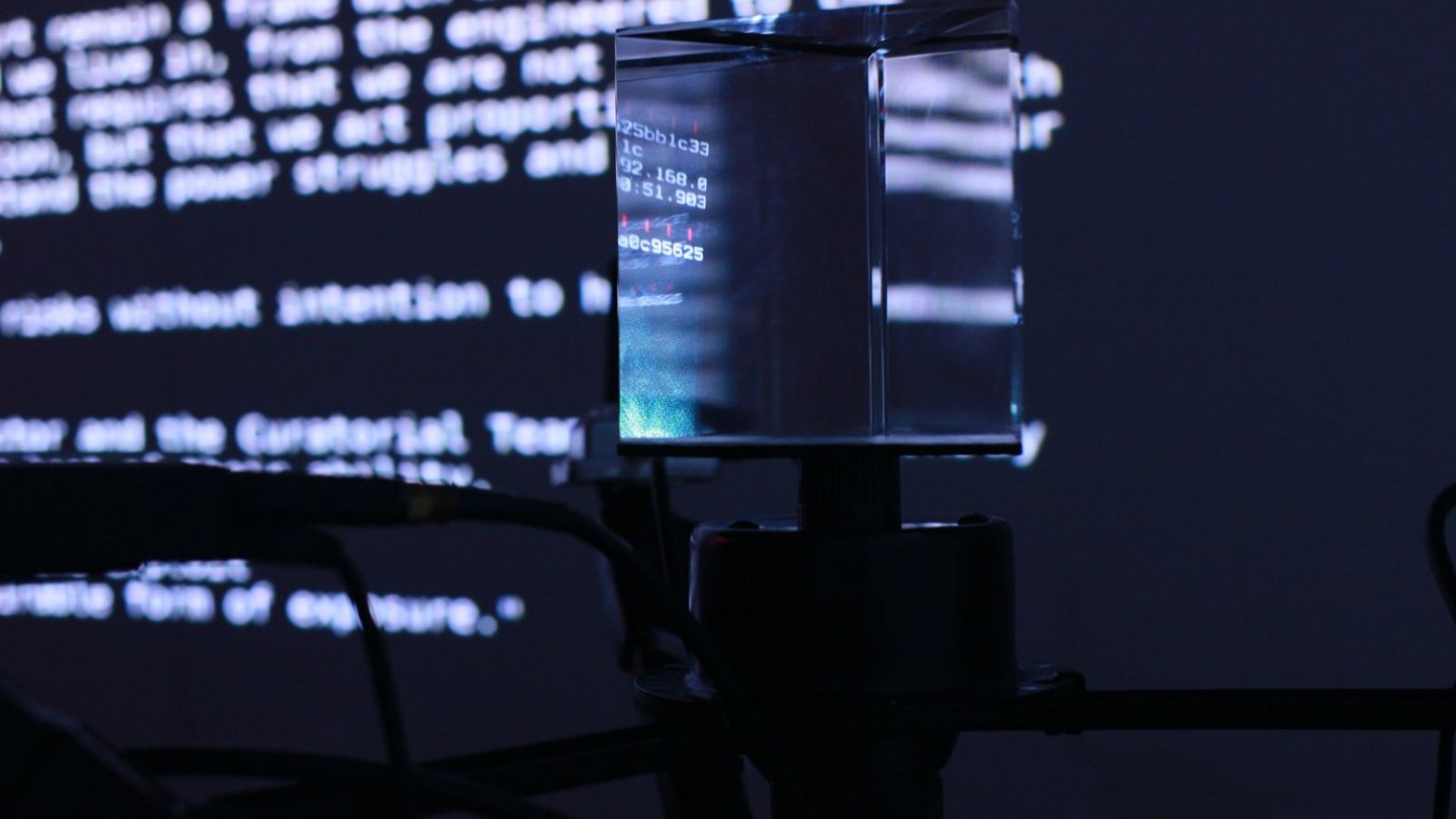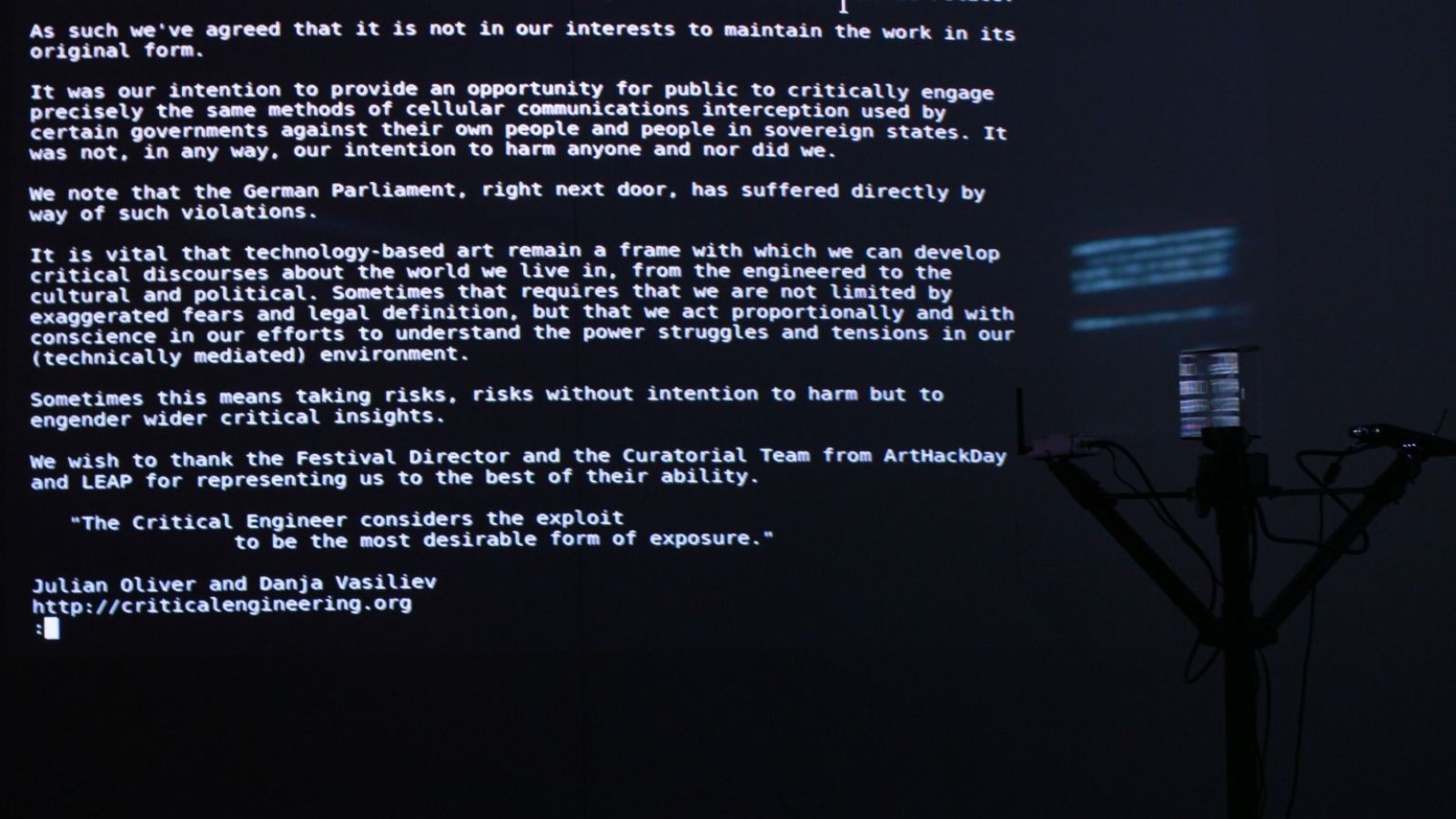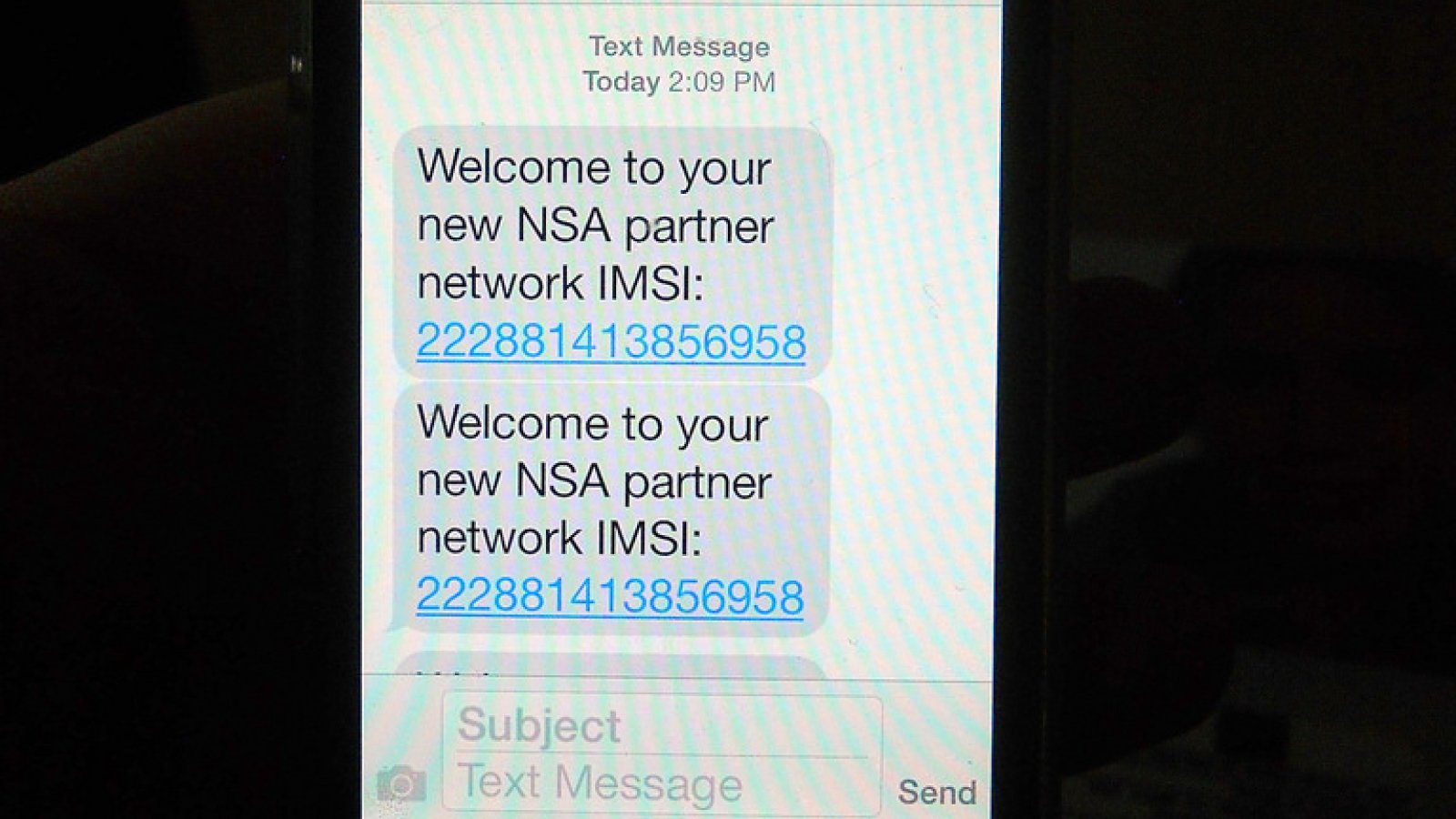


INTRODUCTION
PRISM: The Beacon Frame is a speculative, functional response to the general absence of information as to what NSA PRISM equipment actually looks like. Centered with the image of the prism, the project seeks to provide public direct contact with the aesthetics, technology and strategies used by states against their publics (and others), retained from critical contact by an opaque and coveted surveillance culture. The project was initially developed in two days by Julian Oliver and Danja Vasiliev as part of ArtHackDay Berlin, September 2013. It was further developed for the transmediale/ 2014 main exhibition, featuring selected works from ArtHackDay. On the opening night of Transmediale, PRISM: The Beacon Frame successfully hijacked the cellular connection of at least 740 phones, without any interaction from users.
PRISM: TOWER
This iteration of the project is a field deployable wireless surveillance and GSM interception unit comprising a robust tripod, large glass prism, nano computer, nano projector, GSM antenna and cellular communications base-station (also with computer). It employs the same techniques of wireless (WiFi) device localisation and mapping, cell-tower hijacking and wireless packet inspection known to be in use by state sanctioned surveillance agencies such as the GCHQ (UK) and NSA (USA).
When activated, the computer scans for local cell towers owned by mobile service providers (Vodafone, o2, AT&T and so on), building a list of their unique properties. The prism then begins rotating and one by one each cell provider is impersonated by the PRISM tower. Activated mobile phones in the presence of the tower will hop onto the rogue network, 'recognising' its properties and believing it to be trustworthy. At that point they are each sent SMSs of a troubling, humorous and/or sardonic nature. Data corresponding to these events are projected through the prism, in turn showered onto the walls in a rich and exploitative light show. Audiences peering into the prism 'see inside' the internal workings of this intervention, from the unique ID of the phone intercepted to messages sent.
Projected onto a wall behind the tower structure is a data-rich, dynamic 2 dimensional map of all WiFi enabled devices in the vicinity of the installation. Typically comprising smart-phones, the location, unique 'hardware fingerprint' and hostname ("Tara's iPhone") are plotted on this map, updated with every movement by the owner of that device. Audiences in room with the Tower may note their friends approaching, merely by recognising their name on the map.
COMPLAINTS AND TAKEDOWN: TRANSMEDIALE 2014
During the opening night of Transmediale 2014, PRISM: Tower interacted with over 740 phones. Each device was sent a notification message. Soon after, most of these devices were sent one of several different SMS, ranging in paranoia-inducing and or humorous intensity. Whilst the intervention was met with much praise (including that of two German politicians present at the event who no doubt found it a timely comment on US interception of cellular communications from the German Parliament, right next door), a few people found the intervention too distressing to accommodate. Complaints were made to the technical contractor responsible for the AV and networking set up of the festival. He promptly and without any due process removed the components of the installation he knew to be responsible for the intervention, effectively disabling a vital component of the work and threatened to call the German Federal Police on further complaints if the piece were to be restored.
A meeting was held between the developers, technical head and festival director. The festival director pointed out that the festival and its umbrella organisation could not afford to give the artists legal protection from a possible report to the police. Given the lack of cover and severity of the potential charges in Germany (including heavy fines and jail time), the artists chose not to restore the work. The developers of the work Julian Oliver and Danja Vasiliev published the following statement:
We, the creators of "PRISM: The Beacon Frame", wish to express our disappointment at the disabling of a crucial element of this work at Transmediale 2014, with the threat of reporting us to the German Federal Police. As such we've agreed that it is not in our interests to maintain the work in its original form. It was our intention to provide an opportunity for public to critically engage precisely the same methods of cellular communications interception used by certain governments against their own people and people in sovereign states. It was not, in any way, our intention to harm anyone and nor did we. We note that the German Parliament, right next door, has suffered directly by way of such violations. It is vital that technology-based art remain a frame with which we can develop critical discourses about the world we live in, from the engineered to the cultural and political. Sometimes that requires that we are not limited by exaggerated fears and legal definition, but that we act proportionally and with conscience in our efforts to understand the power struggles and tensions in our (technically mediated) environment. Sometimes this means taking risks, risks without intention to harm but to engender wider critical insights. We wish to thank the Festival Director and the Curatorial Team from ArtHackDay and LEAP for representing us to the best of their ability. "The Critical Engineer considers the exploit to be the most desirable form of exposure."
Julian Oliver, Danja Vasiliev
This statement was also displayed in the exhibition space replacing the output of disabled work.